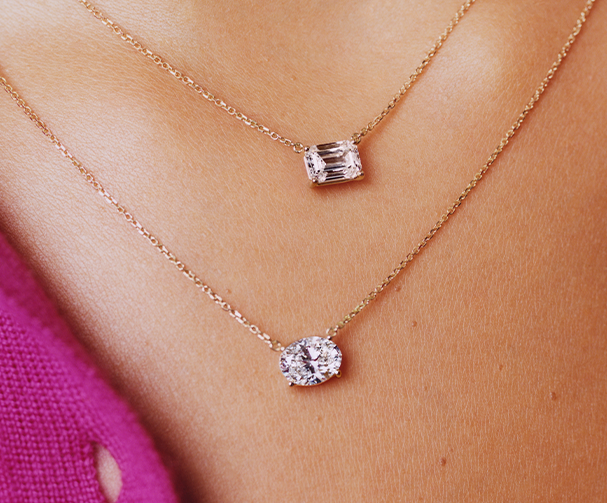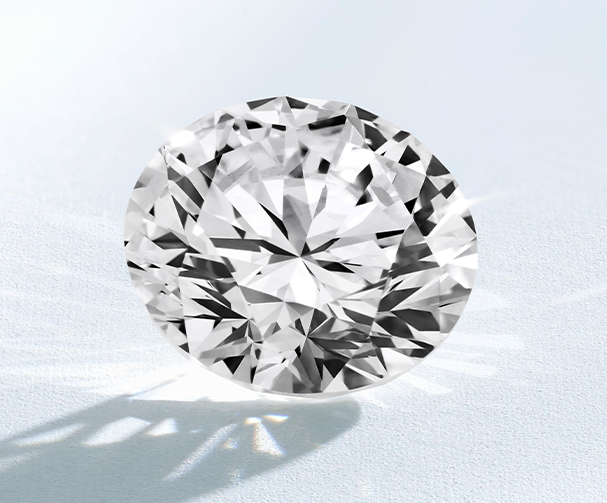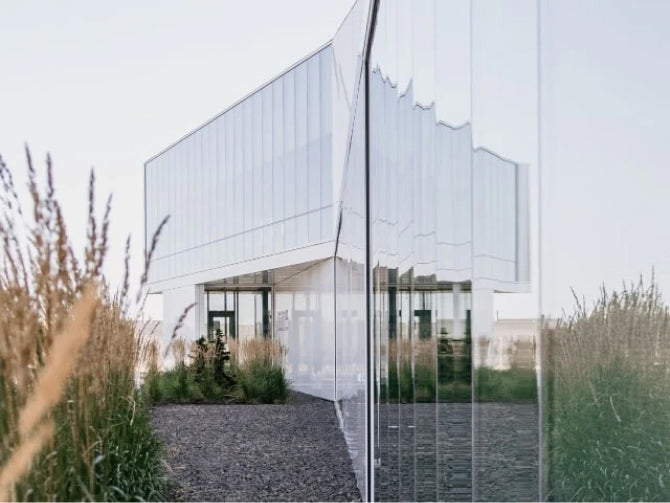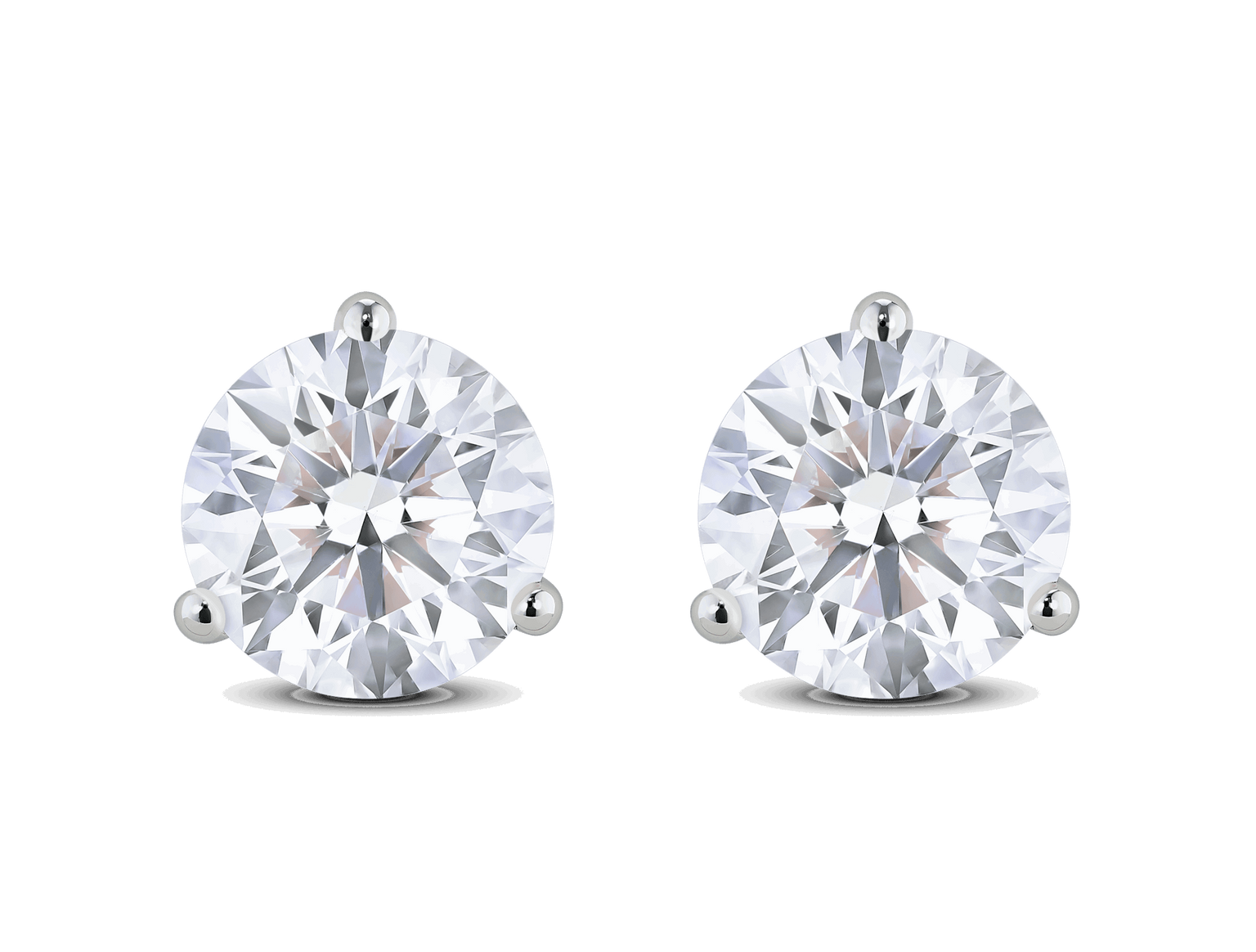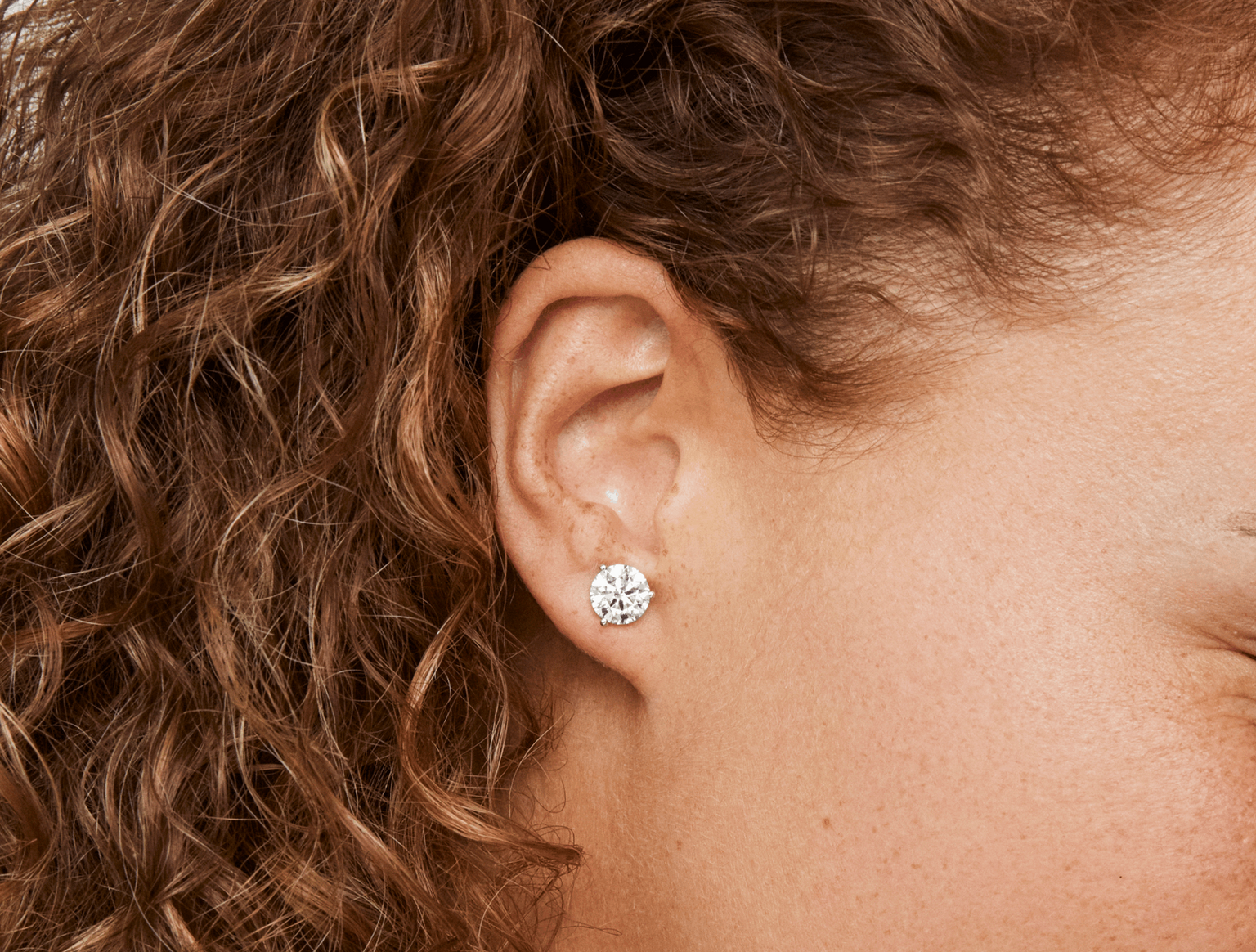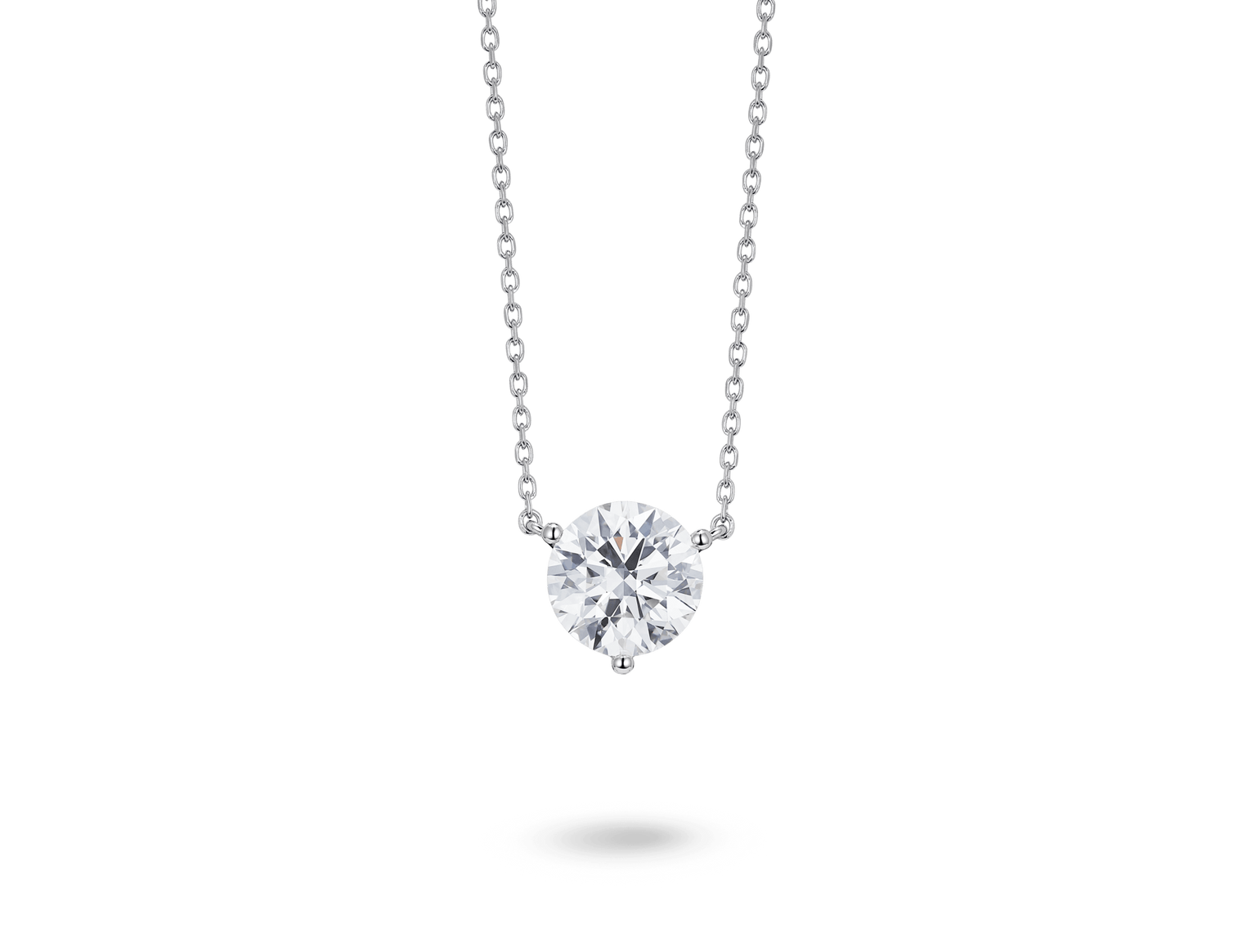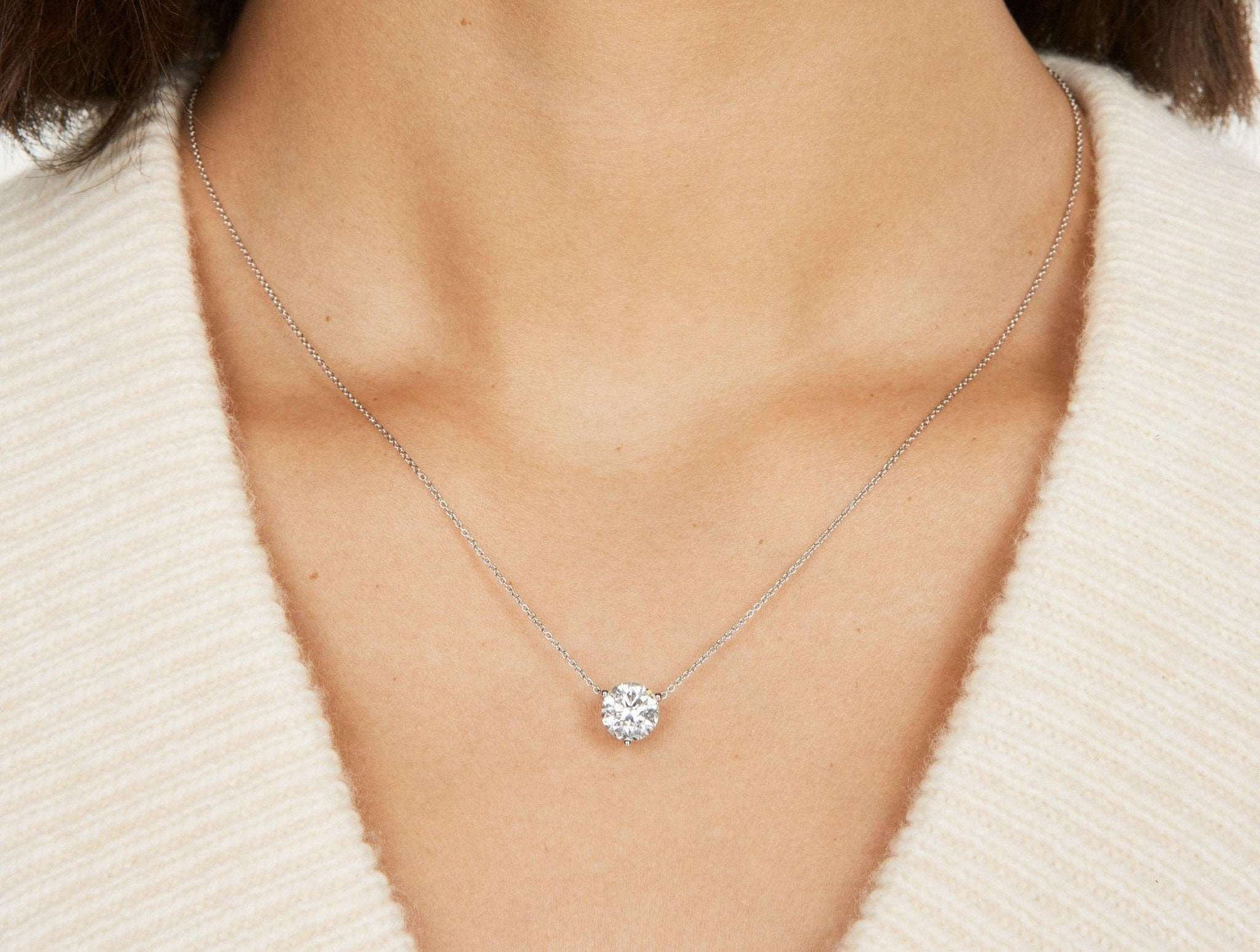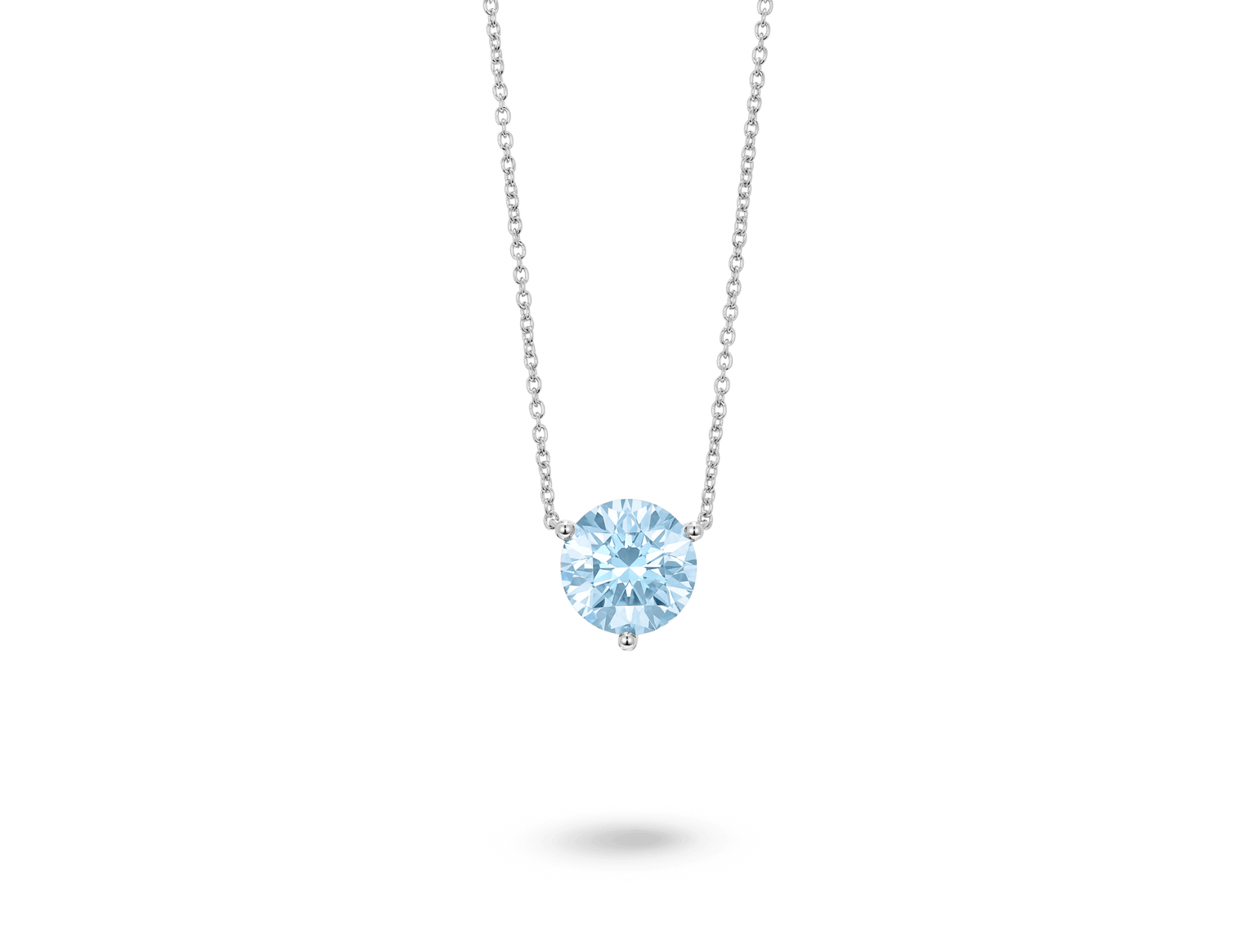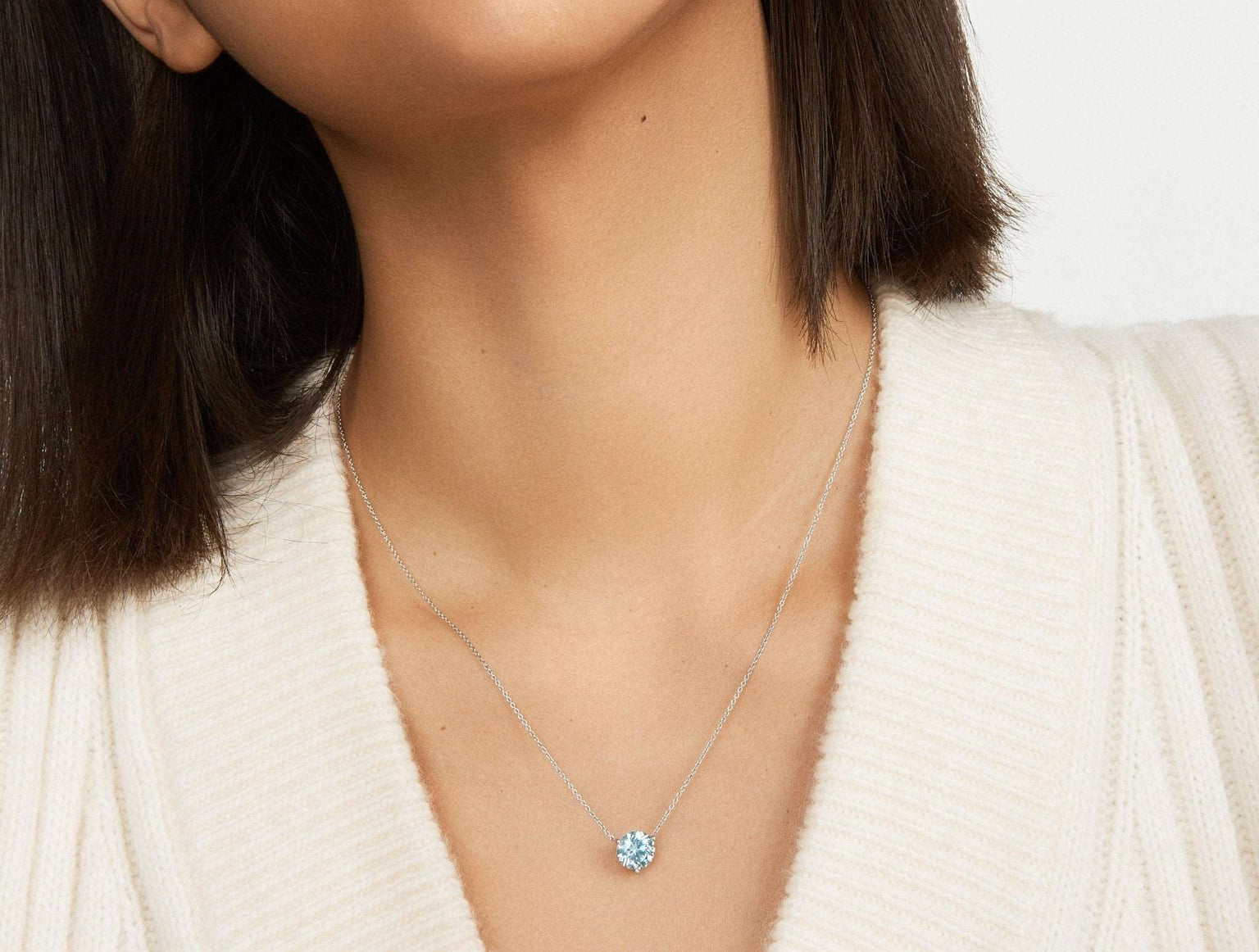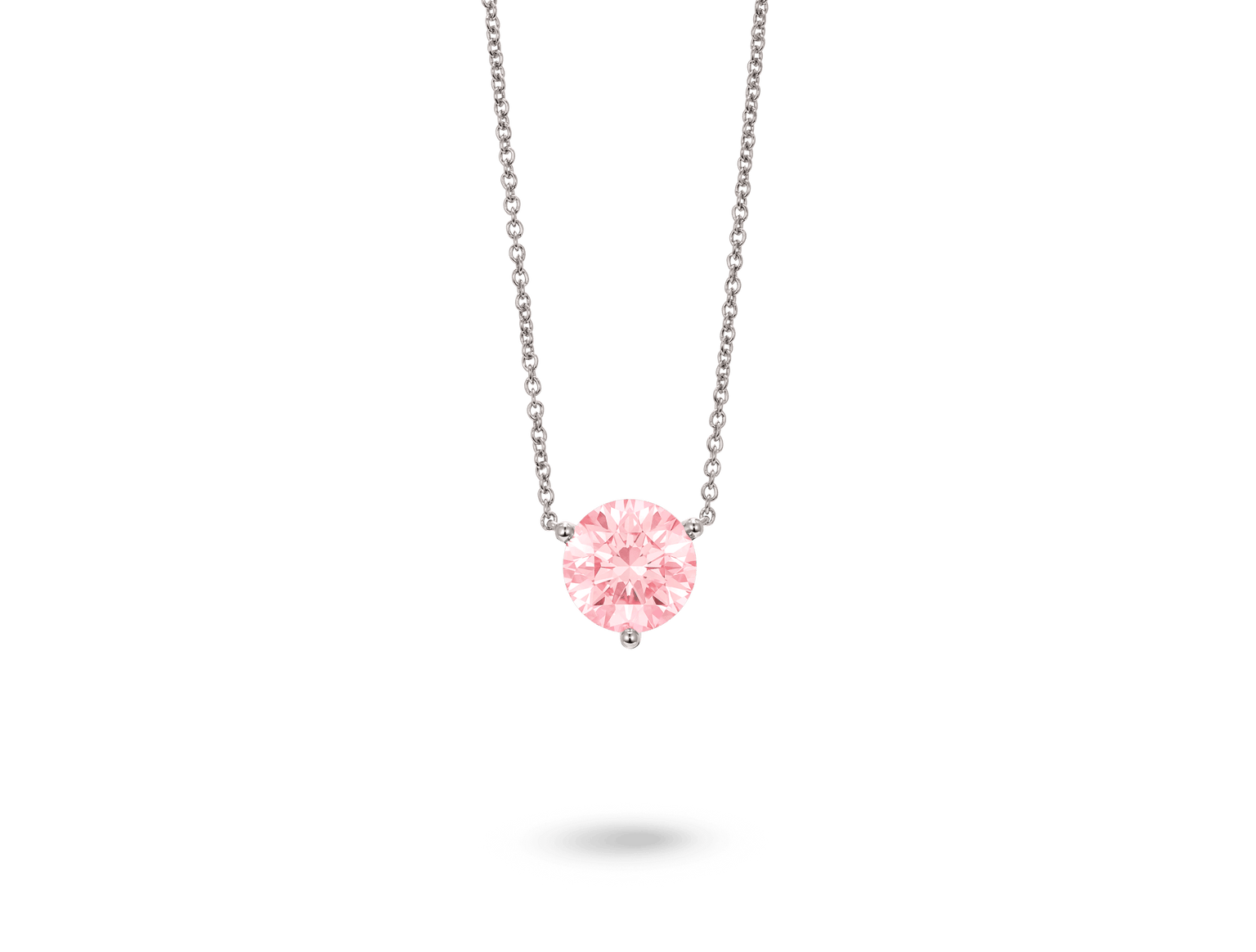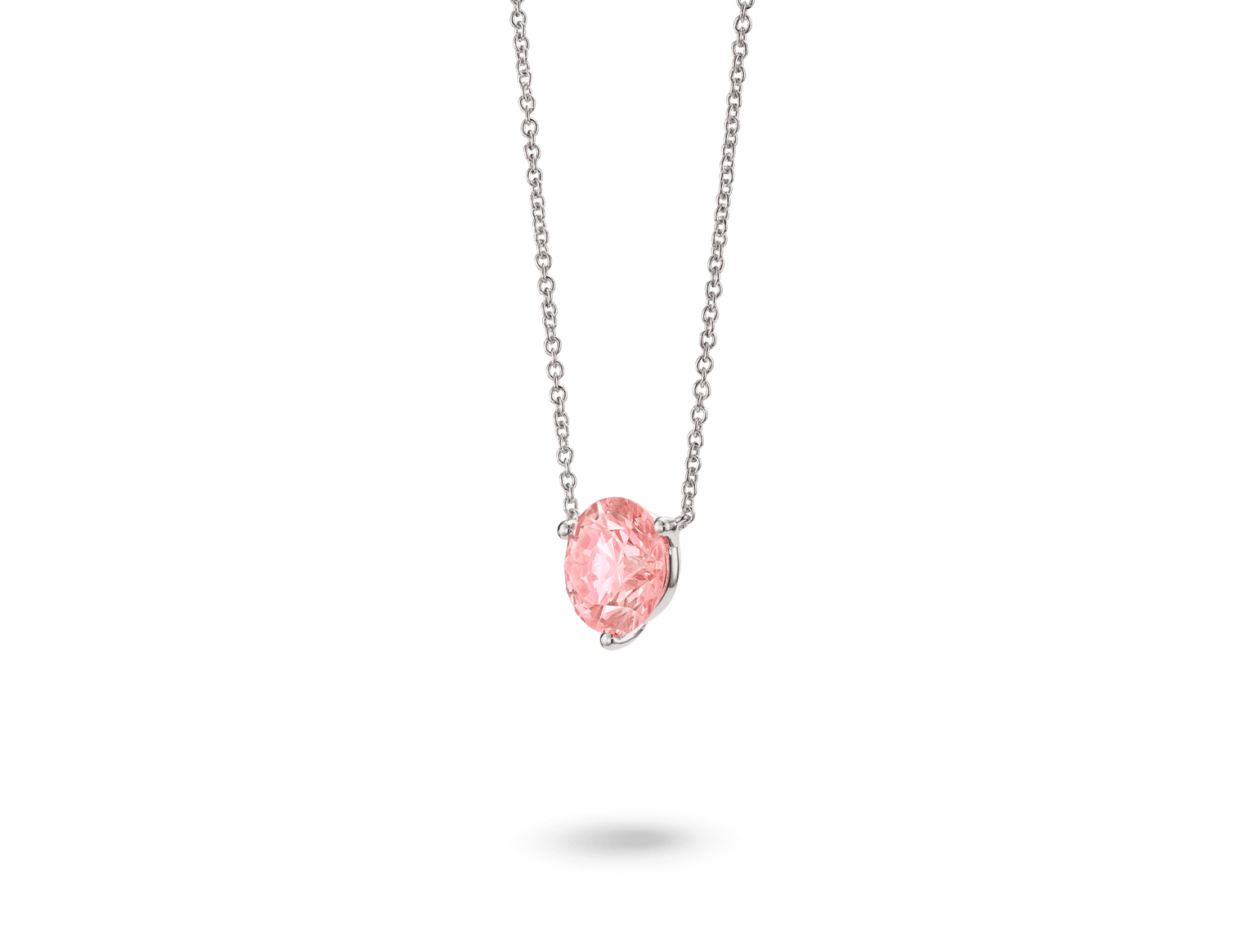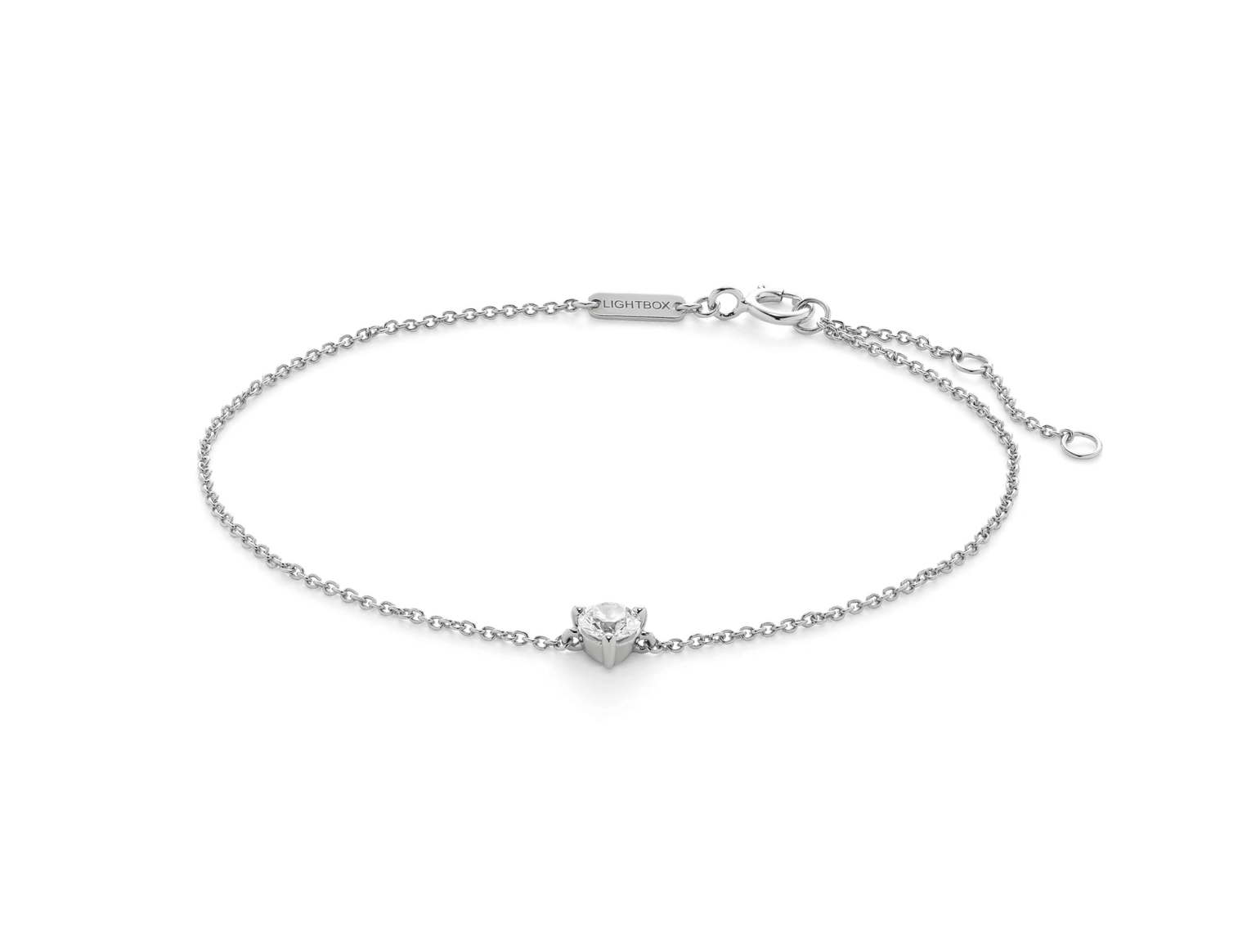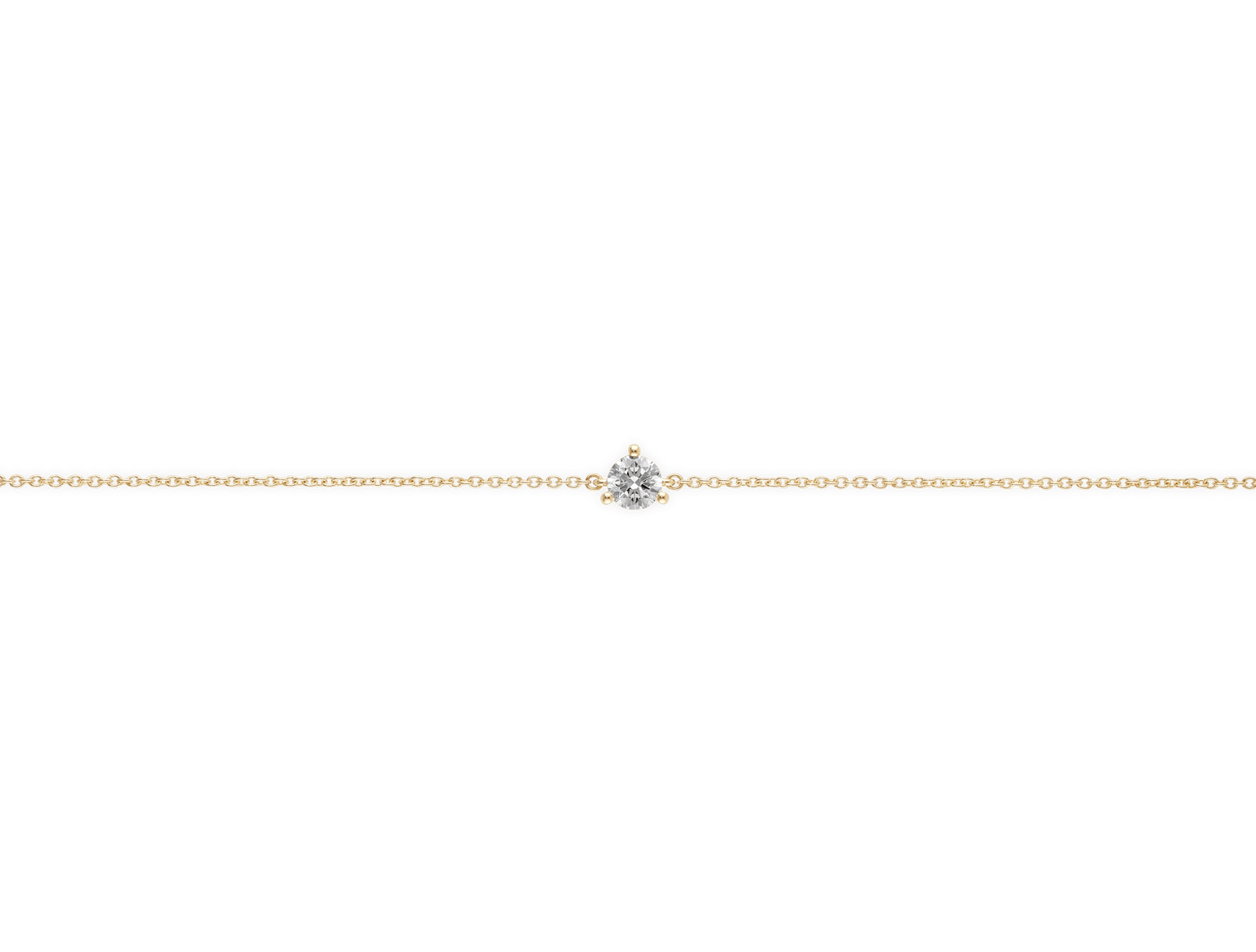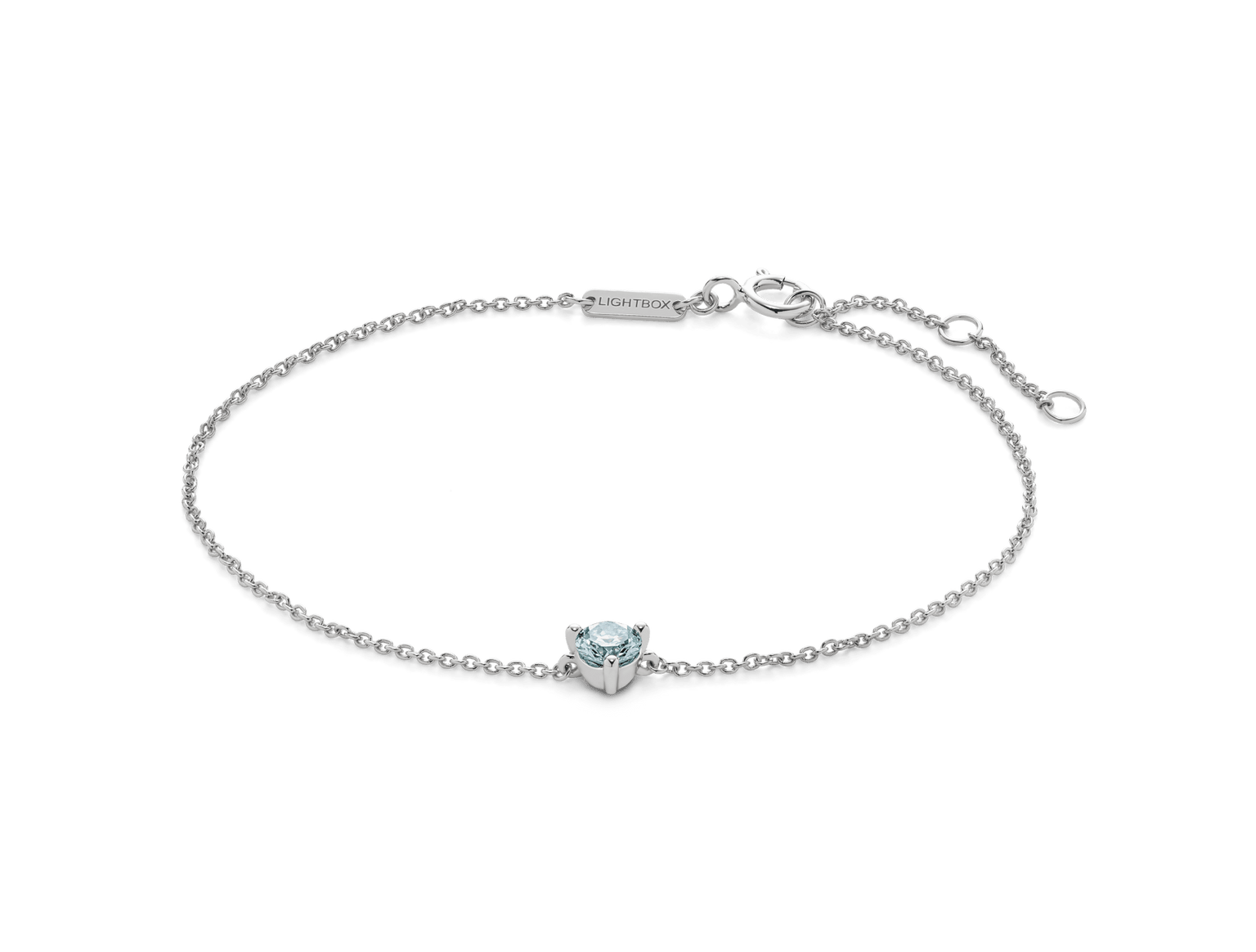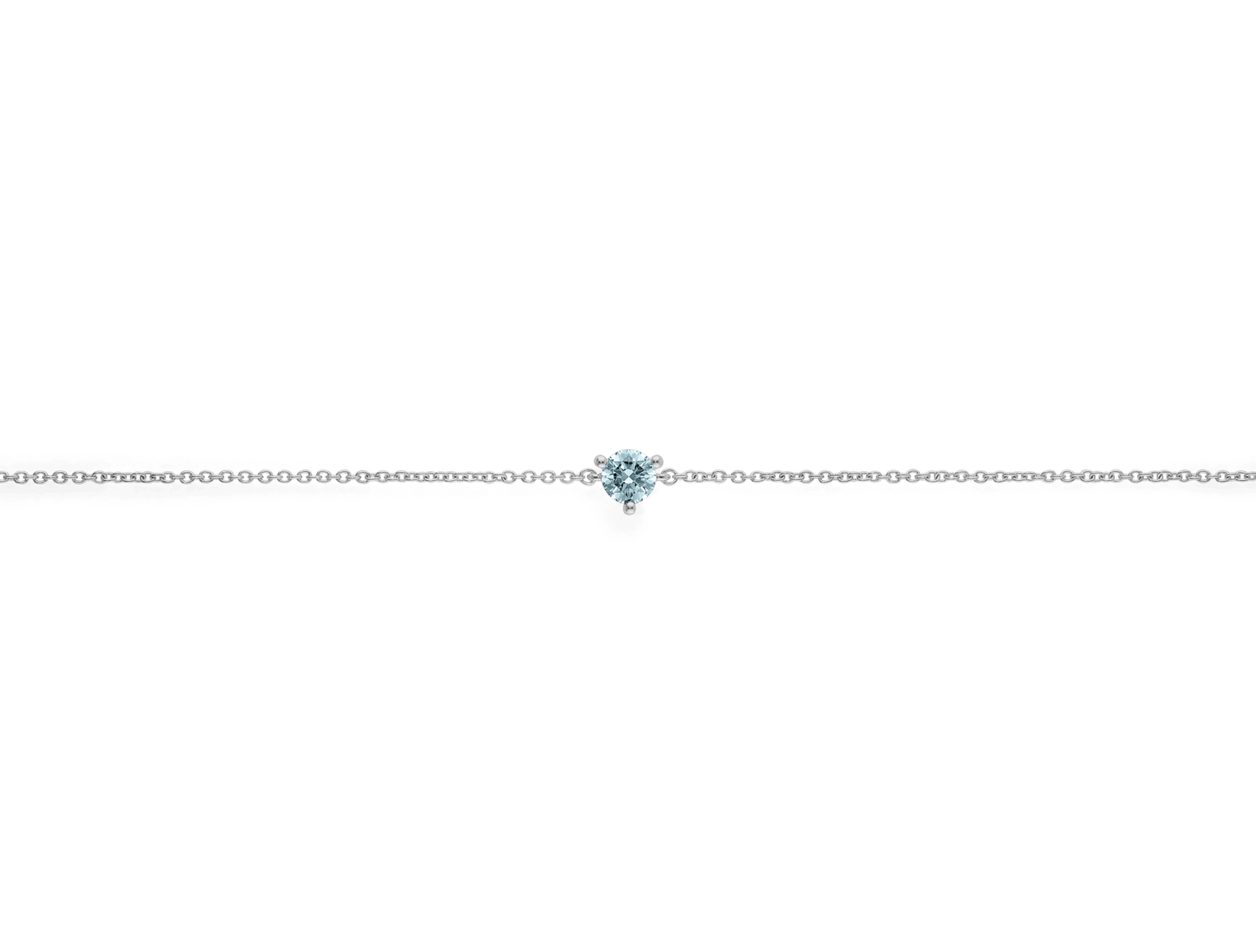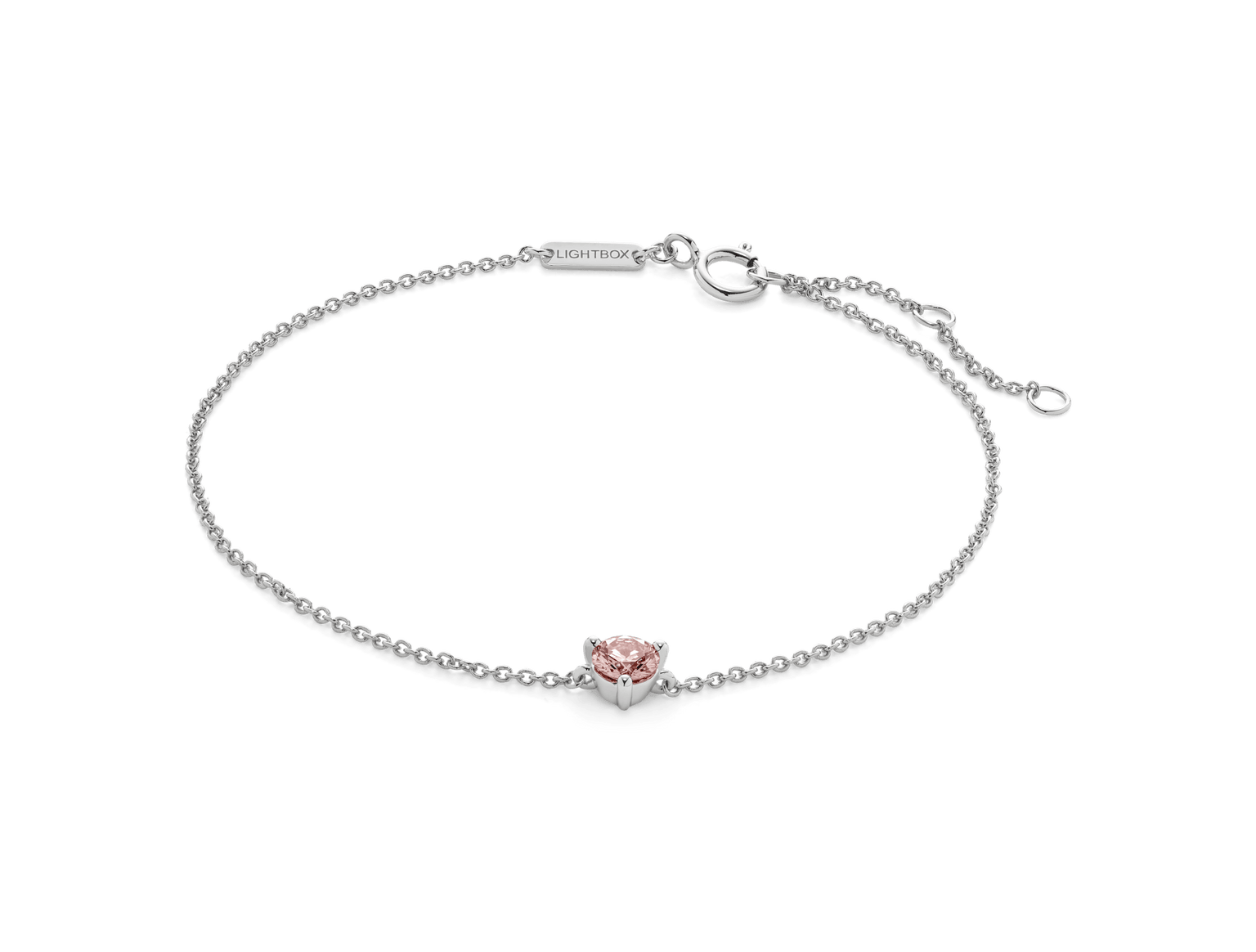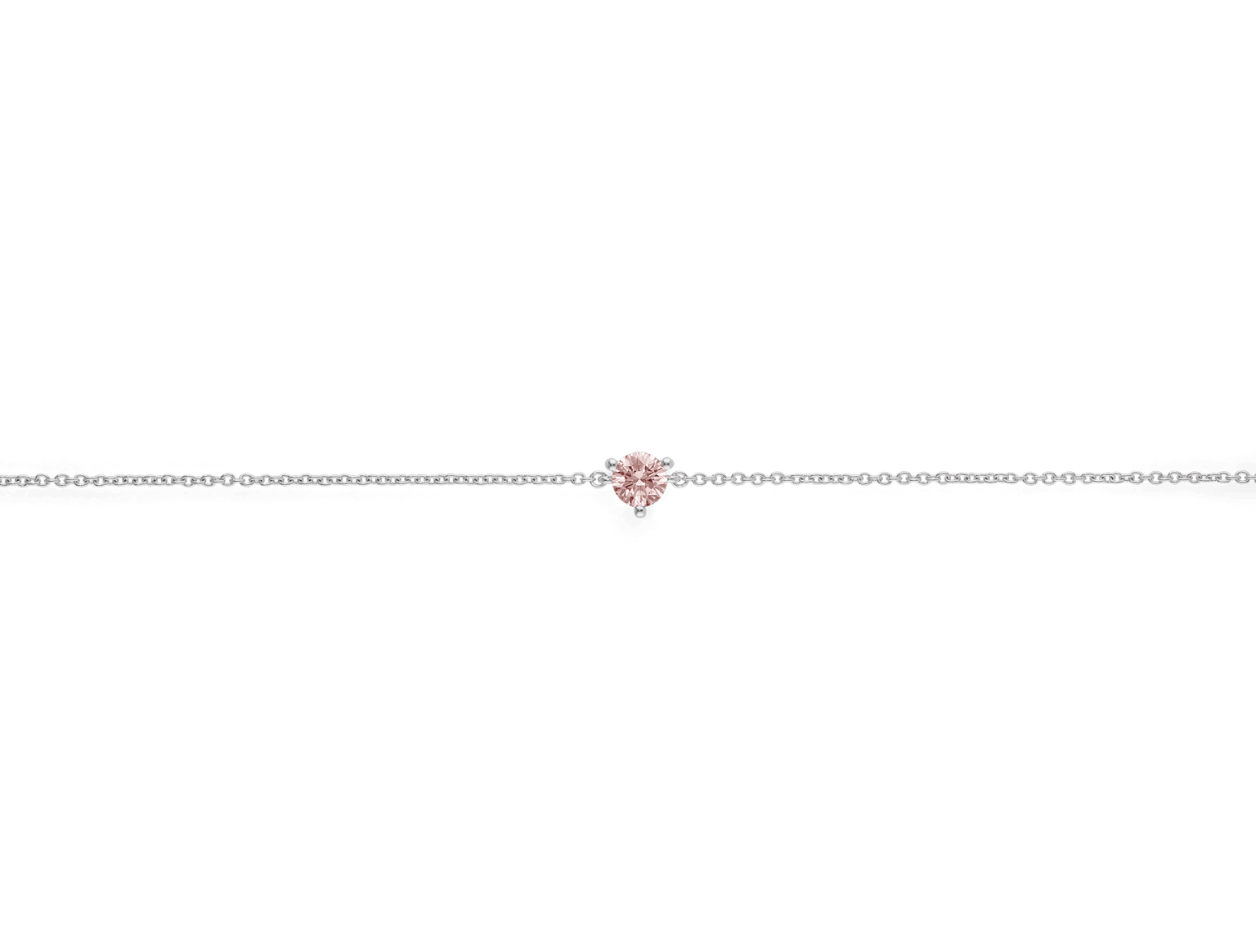While you may wear your heart on your sleeve figuratively, our collection of lab-grown heart shaped diamond earrings and necklaces are a timeless way to don the flirty silhouette for all occasions. And if you are looking to take the sentiment a step further, our lightbox heart shaped lab-grown diamonds are brought to life in our signature blush pink color.
Ready to know more about the heart shaped diamond? Read on for a full guide explaining the stone’s history, facts, and styling tips. Searching for our lightbox lab-grown heart cut diamond? Let us know! Whilst this shape was available in our first collection, it is not in our current selection - but we love to know what you'd like to see come back.
What is a heart cut diamond?
Modified from a classic Round Brilliant cut the heart cut diamond is characterized not only by its recognizable shape but also by its symmetry. But before diving into its dazzling history, here are a few specific heart shaped terms that detail a heart cut lab-grown diamond’s overall look that will be helpful as you learn more about the heart shape diamond.
The cleft is the V-shaped space between the upper curves of the heart. When picking a heart shape diamond, you’ll want a well-defined and sharp-looking cleft. On a stone, the two curves creating the heart are called lobes, and these should be symmetrical to each other in size and come together at a precise point. The wings and the belly of a heart shape diamond refer to the shape of the sides. Some wings are more rounded than others, which isn’t necessarily a bag thing. But when the wings and the belly are too bulbous, the proportions will look incorrect.

History of the heart cut diamond
Unsurprisingly, the origins of the heart cut diamond are rooted in royalty. A reference to the cut’s existence first popped up in 1463 when the duke of Milan compared the political desires of Cosimo de Medici, a wealthy banker whose family dynasty ruled Florence, Italy, to a heart-shaped diamond.
But the symbolism behind the heart shape has always had love and admiration at its core. Did you know that in 1562 Mary, queen of Scots sent queen Elizabeth I a heart shape diamond ring? This sparkly gift is seen as one of the most notorious symbols of friendship and goodwill between royals. Sure, Elizabeth sanctioned Mary’s beheading in 1578 for being complicit in her attempted murder. Then again, there’s no diamond gift great enough to say “sorry, I tried to have you killed, my queen.”
Today, the heart shaped diamond is seeing an uptick in popularity after appearing (rather, ahem, prominently) in engagement rings for Lady Gaga and Nicki Minaj.
How to choose a heart cut diamond
While lightbox has several sizes of lab-grown stones, know that a heart shape stone should be approximately a half-carat in size in order to best display the curves of the heart shape to the naked eye. As with most sparkly things in life, bigger is better; so if there's room in your budget, consider a larger size to allow the stone's complex cut to really shine.
A note from the lab: when you see smaller accent stones, called pavé or melee diamonds, they’re almost exclusively cut into round stones because it’s the most optimal shape for smaller sized diamonds.
Another style option you have when choosing a heart shaped lab-grown diamond is to consider the settings. At lightbox, you have two setting choices. The first is a classic three-prong setting, which gives the stone’s facets space to shine, or a bezel setting, where a metal rim surrounds the stone. In most stones, including a heart shaped diamond, a bezel setting will help to protect the girdle, which is the widest part of the diamond, from damage. Traditional prong settings may need to be occasionally checked and possibly tightened by a local jeweler with frequent wear. Our prongs are hand-set and must pass rigorous quality control tests to ensure the diamond doesn’t pop out and get lost or damaged.
Ultimately, make the setting choice based on your own style preference.
 The 4C’s of heart cut diamonds
The 4C’s of heart cut diamonds
Finding the right hybrid of quality, cut, and size to match your budget is the key to discovering a piece of jewelry you’ll reach for again and again. To simplify the process, the universal standard for grading natural and lab-grown diamonds and gemstones is the 4c’s, which stand for cut, clarity, color, and carat.
Clarity
Diamond clarity is the assessment of small imperfections on the surface and within the stone. According to the gemological institute of America (GIA), clarity flaws are more obvious in heart cut diamonds. This is because the diamond’s table, which refers to the upper flat part of the stone, is larger in size allowing for a larger field of vision where flaws can be spotted.
Every Lightbox lab-grown diamond has been measured as vs (which stands for very slightly) or better. This means the stone has minor inclusions that are difficult to see at 10x magnification and cannot be seen by the naked eye.
Cut
Symmetry is a big influence on one’s personal preference between one heart cut diamond or another. The ideal heart shape diamond should be cut at a length-to-width ratio of 1:1 or 1:1.2. However, this measurement is not always attainable for most excellent cuts. What is necessary, however, is to achieve a cut with 59 facets, which allows the stone to showcase maximum fire and brilliance.
The cut is often considered the most important of the 4c’s and a heart shape is one of the most difficult shapes for an expert cutter to achieve. At Lightbox, our skilled cutters are trained to achieve the highest possible grade for each piece of lab-grown diamond rough while maintaining the highest levels of scintillation. Their training and skill can guarantee beautiful, bright, and symmetrical heart shape diamond earrings, rings, or necklaces.
Color & Carat
Because we are able to offer consistent quality with each lab-grown diamond, our pricing is transparent at always 800 USD per carat. Our process helps to take the guesswork out of buying heart shaped diamond earrings and other heart cut pieces.
How to style a heart cut diamond
The best styling advice we can offer is to pick a piece that speaks to you and don’t worry too much about what’s trending. Our great, well-made lab-grown diamond jewelry will always be in fashion, but our price means you can experiment a little and have fun with a shape like a heart, and the lightbox design team has some great suggestions to consider. The beautiful heart cut diamond is a great opportunity to have fun with the colorful diamonds featured in our collection, with a saturated pink hue. If you’re opting for a pink heart cut diamond, try a rose gold setting to make the blush pink stone really pop.
